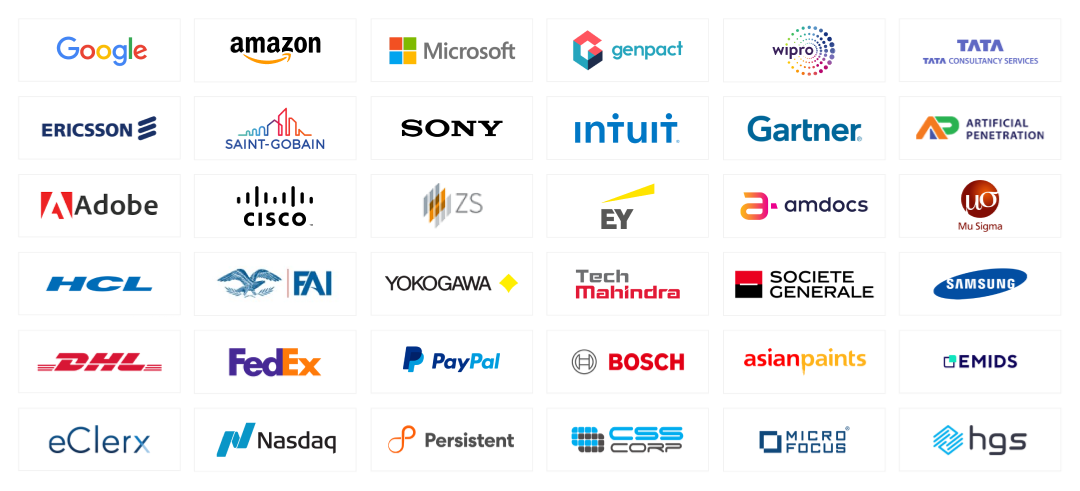Your cart is currently empty.






Learning Format
Online
Live Classes
6 Months
Microsoft & Intellipaat
Certification
Career Services by
Intellipaat
EMI Starts
at ₹8,000/month*
This program in Financial Analysis with Agentic AI enables finance professionals and enthusiasts to master contemporary financial decision-making. The program is a blend of traditional financial models and advanced Agentic AI tools that aim to improve forecasting accuracy, strategic investment, and enterprise-wide analysis.
About Microsoft:
Microsoft is a global technology leader known for its software products like Windows operating Systems, Office, and Azure cloud services. Founded in 1975 by Bill Gates and Paul Allen, it has played a pivotal role in shaping the personal computing and enterprise software industries. Today, Microsoft drives innovation in AI, cloud computing, andRead More..
Benefits for students from Microsoft:
Analyze and interpret financial data through data models to make investment recommendations and accelerate business development.
Examine quantifiable exposure to risks, devise strategies to mitigate the modeled risk, and apply AI-based scenario predictive analytics.
Utilize insights provided by AI to pinpoint portfolio gaps and manage asset performance.
Assist with mergers, capital budgeting, and business valuations using strategic financial knowledge.
Skills to Master
Power BI
Agentic AI in Finance
Financial Modeling & Valuation
Forecasting & Budgeting
Risk & Portfolio Management
Business & Market Analysis
Strategic Financial Planning
Corporate Performance Analytics
Legal & Regulatory Compliance
Tools to Master
Spreadsheet basics for financial modeling and data analysis.
Master advanced Excel features like pivot tables, VLOOKUP, macros, and dynamic charts.
Use statistical functions and mathematical tools to address real-time finance issues.
Study macro- and microeconomic concepts and their application in financial markets and decision-making.
Understand accounting concepts, principles, and the accounting cycle.
Learn to analyze an organization’s assets, liabilities, and equity structure.
Understand revenues, expenses, and net income for profitability analysis.
Analyze a firm’s liquidity and ability to generate cash.
Apply ratio analysis and trend analysis to measure financial health and performance.
Apply forecasting techniques using historical data and Excel modeling.
Comprehend the structure, services, and revenue models of IBs.
Examine public issue processes, pricing strategies, and underwriter roles.
Master valuation, due diligence, synergies, and post-merger integration.
Examine long-term infrastructure and industrial project funding structures.
Introduction to debt, equity, derivatives, and hybrid instruments.
Master NPV, IRR, annuities, perpetuities, and discounting cash flows.
Learn DDM and relative valuation techniques for equity instruments.
Learn bond pricing, yield curves, duration, and convexity.
Construct equity valuation models using real-time stock data and Excel.
Learn to appraise investment projects with NPV, IRR, and Payback.
Learn about systematic and unsystematic risks, CAPM, and Beta.
Compute WACC and learn how it is applied in project appraisal.
Learn optimal capital structure and the consequences of debt-equity decisions.
Learn modern portfolio theory and optimize portfolios using Excel and Solver tools.
Understand options, futures, forwards, swaps, and hedging strategies.
Study strategic asset allocation and diversification methods.
Study portfolio performance with Sharpe, Treynor, and Jensen indices.
Use evaluation structures to analyze live portfolios and enhance results.
Study valuation as a strategic corporate finance tool.
Do discounted cash flow valuations with FCFF and FCFE methodologies.
Apply EV/EBITDA, P/E, and P/BV ratios for relative valuation.
Investigate startup valuation models under uncertainty and limited information.
Understand how to value managerial flexibility in capital budgeting.
Construct end-to-end valuation models combining DCF and multiples.
Tools to hedge interest rate, FX, and market volatility.
Analyze default probability and exposure at default through AI models.
Comprehend integrated risk frameworks in banks and corporations.
Discover how blockchain, robo-advisors, digital payments, and Agentic AI are transforming finance.
Model VaR, stress testing, and scenario analysis using Excel.
In the first module of this Course, you will learn the basics of Power BI
Hands-on Exercise –
In the second module of this Certification, you will learn the basics of data extraction
Hands-on Exercise –
Hands-on Exercise –
Hands-on Exercise –
Hands-on Exercise –
Hands-on Exercise –
Hands-on Exercise –
Hands-on Exercise

Admission Details
The application process consists of three simple steps. An offer of admission will be made to selected candidates based on the feedback from the interview panel. The selected candidates will be notified over email and phone, and they can block their seats through the payment of the admission fee.
Submit Application
Tell us a bit about yourself and why you want to join this program
Application Review
An admission panel will shortlist candidates based on their application
Admission
Selected candidates will be notified within 1–2 weeks
Total Admission Fee
EMI Starts at
We partnered with financing companies to provide very competitive finance options at 0% interest rate
Financing Partners
![]()
The program is taught by Industry through live online sessions and covers the following:
Through this course, you will develop key finance and AI integration skills. These are
This Program in Financial Analysis with Agentic AI includes eight in-depth modules, workshops with hands-on practice, and a capstone project that will prepare you for high-growth jobs:
Financial Analysis with Agentic AI opens doors to high-paying and strategic finance careers.
We record all our live sessions. Therefore, if you miss any of your live classes, you don’t need to worry, as the recording will be available to you within 12 hours of the session on the learning platform (Intellipaat LMS).
We’re here to support you at every step. To learn more about our refund policy, please click here
What is included in this course?
 Click to Zoom
Click to Zoom













